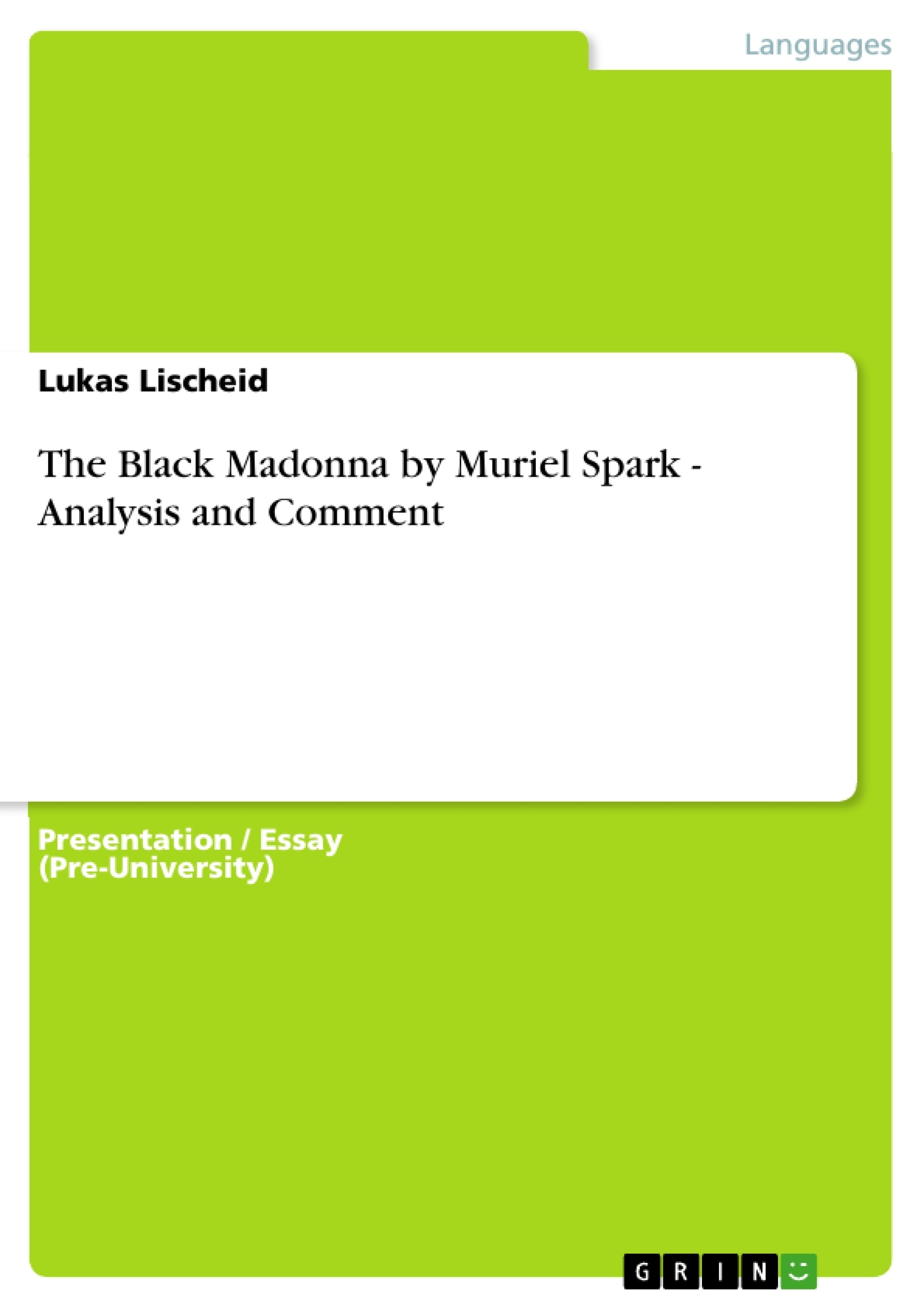The short story “The Black Madonna“, written by Muriel Spark, gives a vivid portrait of the dormant and hidden racism of British inhabitants in the 1950s. It can also be understood as a criticism on people who pretend to be religious but do not behave like that.
Inhaltsverzeichnis (Table of Contents)
- Summary (Comprehension)
- Analysis and Comment
Zielsetzung und Themenschwerpunkte (Objectives and Key Themes)
The objective of this text is to analyze Muriel Spark's short story "The Black Madonna," focusing on its portrayal of hidden racism in 1950s Britain and its critique of superficial religiosity. The analysis delves into the characters' actions and motivations, exploring the complexities of their relationships and the societal pressures they face.
- Hidden Racism in 1950s Britain
- Superficial Religiosity and Faith
- Social Norms and Conformity
- The Nature of Prejudice and Acceptance
- Appearances versus Reality
Zusammenfassung der Kapitel (Chapter Summaries)
Summary (Comprehension): This section provides a comprehensive overview of Muriel Spark's short story "The Black Madonna," setting the scene in a small, conservative town in Liverpool where a Black Madonna statue is installed in a Catholic church. The story follows Raymond and Lou Parker, a childless couple, who befriend two Jamaican men, Henry Pierce and Oxford St. John. The narrative explores the couple's seemingly liberal attitudes juxtaposed with their underlying prejudices, culminating in their shocking reaction to the birth of their black child and their subsequent decision to give the baby up for adoption. The summary highlights the story's ironic tone and its exploration of the hypocrisy and hidden racism prevalent in the depicted society. The events are presented chronologically, focusing on a pivotal incident that exposes the characters' true natures.
Analysis and Comment: This section offers a detailed character analysis of Raymond and Lou Parker, and the two Jamaican men, Henry and Oxford. It examines the Parkers' superficial liberalism, contrasting their outward progressive attitudes with their deep-seated prejudices. The analysis dissects the motivations behind their actions, highlighting their conformity to social norms and their inability to confront their own biases. The section also explores the contrast between Henry's confident demeanor and Oxford's insecurity, revealing the complexities of their interactions with the Parkers and the societal context in which they exist. The analysis emphasizes the hypocrisy of the Parkers, who outwardly champion equality yet ultimately succumb to racist tendencies.
Schlüsselwörter (Keywords)
Racism, religion, hypocrisy, social conformity, prejudice, 1950s Britain, childless couple, interracial relationships, societal norms, superficial liberalism, Muriel Spark, The Black Madonna.
Muriel Spark's "The Black Madonna": A Textual Analysis - FAQ
What is the purpose of this document?
This document provides a comprehensive preview of a textual analysis of Muriel Spark's short story, "The Black Madonna." It includes a table of contents, objectives, key themes, chapter summaries, and keywords, offering a structured overview for academic use.
What are the main themes explored in "The Black Madonna"?
The analysis focuses on several key themes, including hidden racism in 1950s Britain, superficial religiosity and faith, social norms and conformity, the nature of prejudice and acceptance, and the contrast between appearances and reality. The story uses the seemingly liberal attitudes of a childless couple to highlight these themes.
What is covered in the "Summary (Comprehension)" section?
This section provides a chronological overview of the story. It sets the scene in Liverpool, introduces the childless couple Raymond and Lou Parker and their interactions with two Jamaican men, Henry Pierce and Oxford St. John. The summary details the couple's shocking reaction to the birth of their Black child and their decision to give it up for adoption, emphasizing the story's ironic tone and exploration of hypocrisy and hidden racism.
What does the "Analysis and Comment" section offer?
This section delves into a detailed character analysis of Raymond and Lou Parker, and Henry and Oxford. It examines the Parkers' superficial liberalism, contrasting their outward progressive attitudes with their deep-seated prejudices. The analysis explores their motivations, highlighting their conformity to social norms and inability to confront their biases. It also contrasts Henry's confidence with Oxford's insecurity, revealing the complexities of their interactions and the societal context. The hypocrisy of the Parkers, who champion equality yet succumb to racist tendencies, is a central focus.
What are the key words associated with this analysis?
Key words include: Racism, religion, hypocrisy, social conformity, prejudice, 1950s Britain, childless couple, interracial relationships, societal norms, superficial liberalism, Muriel Spark, The Black Madonna.
What is the overall objective of the analysis?
The objective is to analyze Muriel Spark's "The Black Madonna," focusing on its portrayal of hidden racism in 1950s Britain and its critique of superficial religiosity. The analysis explores the characters' actions and motivations within their relationships and societal pressures.
What type of academic work is this preview for?
This is a preview intended for academic use, supporting structured analysis of themes within Muriel Spark's "The Black Madonna".
- Quote paper
- Lukas Lischeid (Author), 2010, The Black Madonna by Muriel Spark - Analysis and Comment, Munich, GRIN Verlag, https://www.grin.com/document/164357




